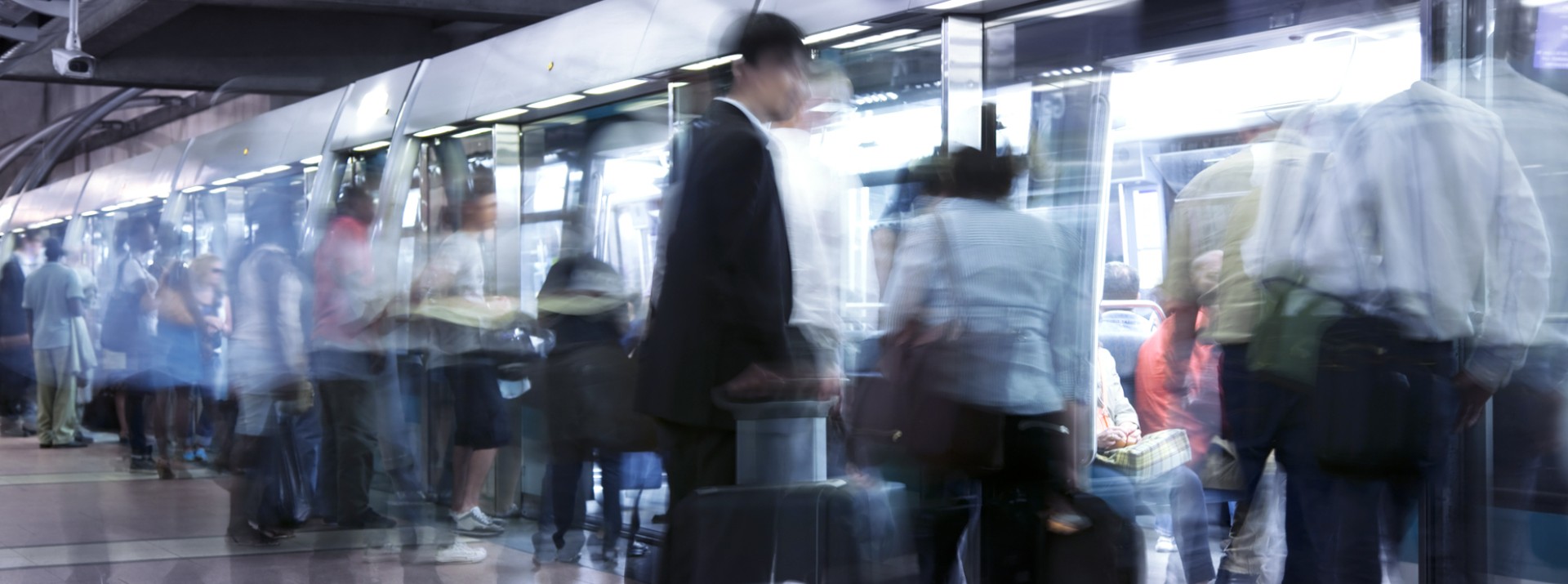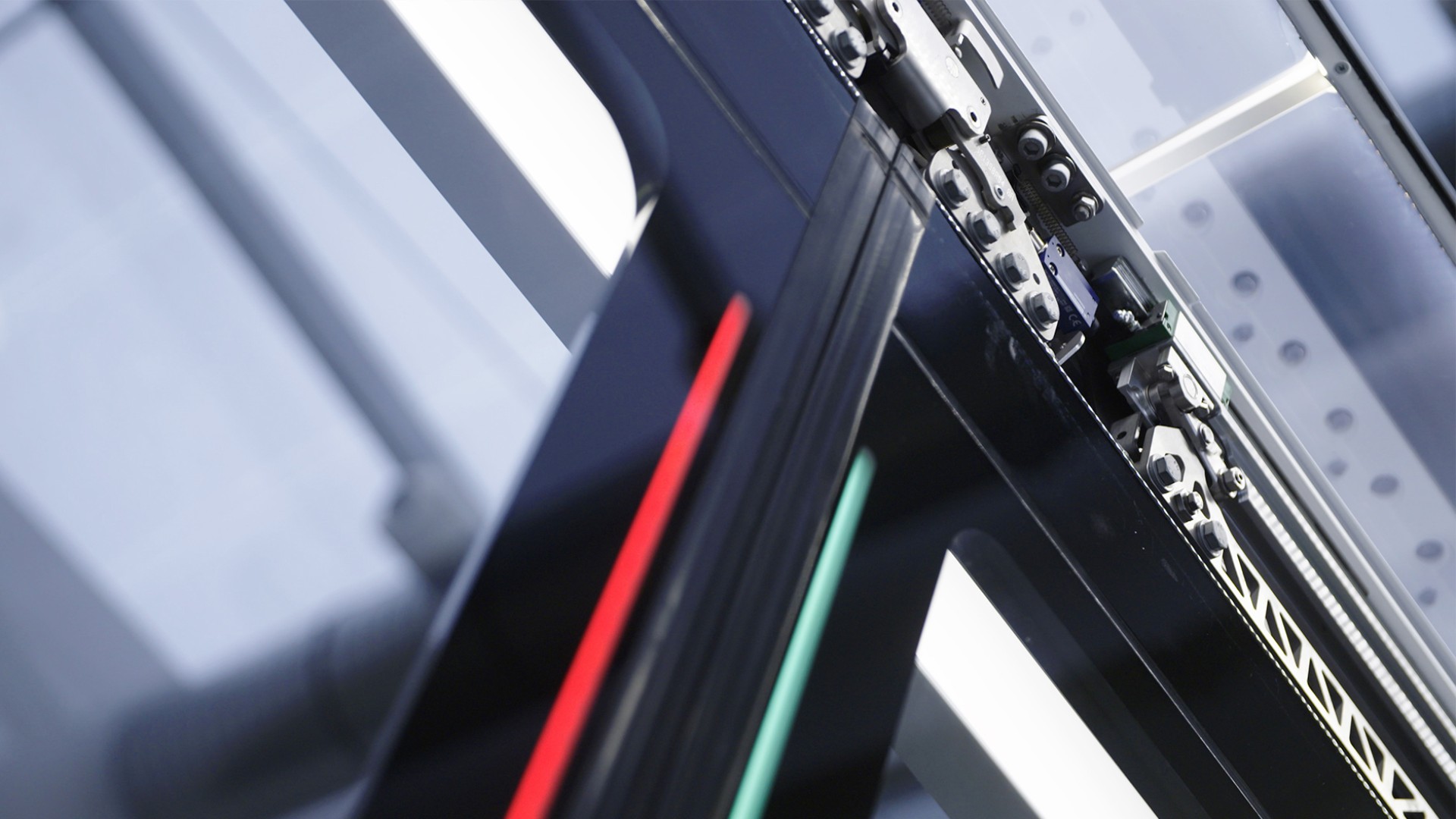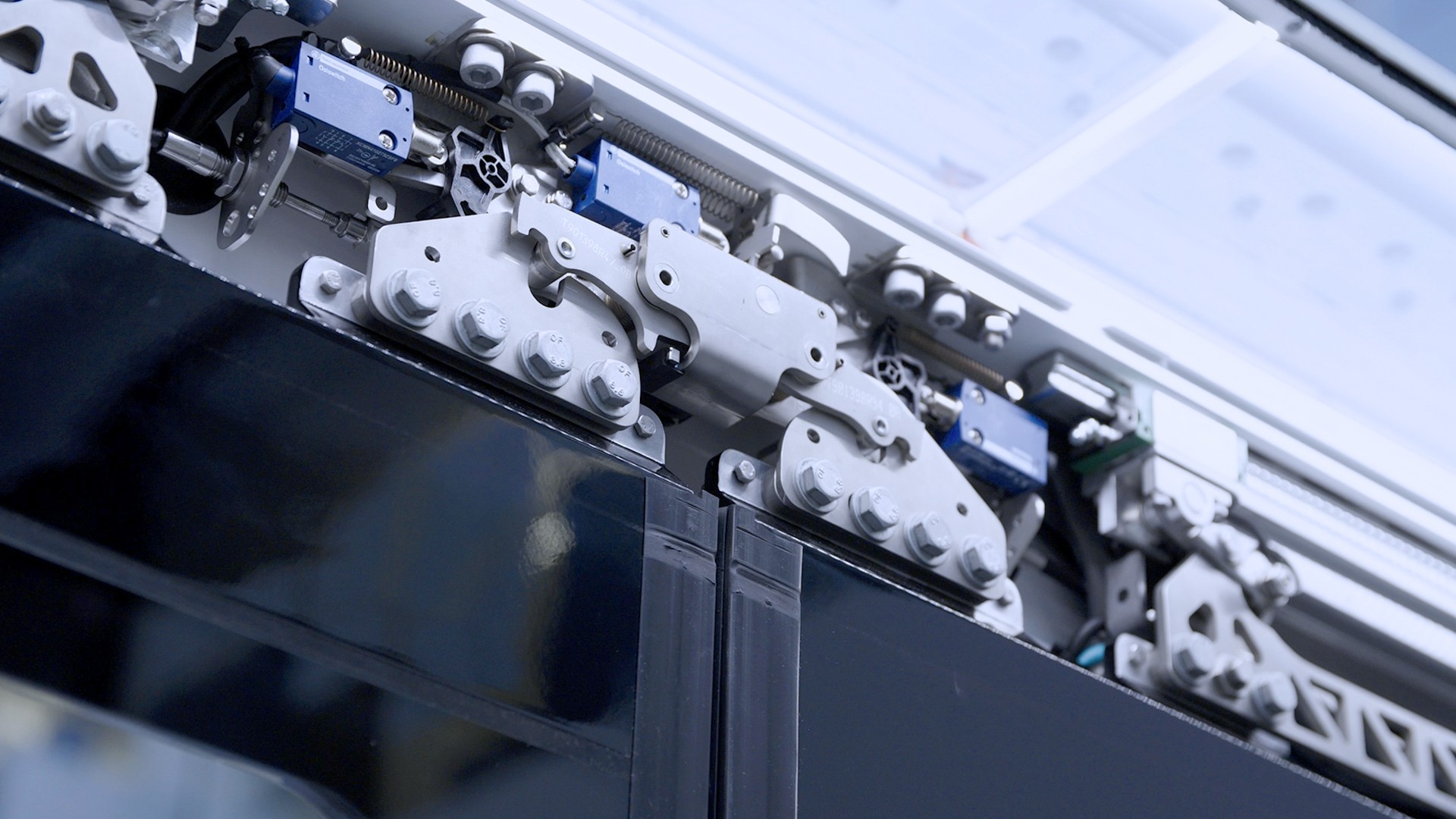
Metro systems are only able to deliver punctual urban mobility when passengers can rapidly enter and exit trains at crowded platforms. The technology offers enormous advantages, especially for metro trains on tight schedules.
When every second counts! Metro systems are only able to deliver punctual urban mobility when passengers can rapidly enter and exit trains at crowded platforms. But streamlining this trackside passenger flow requires genuine innovation – in the form of solutions like the LIFEDrive sliding-door system created by Knorr-Bremse’s IFE brand. The technology offers enormous advantages, especially for metro trains on tight schedules.
Although current passenger numbers still languish below pre-Covid levels, growing urban density and the impending shift to more eco-friendly forms of transportation mean that the global need for rail mobility will only become more acute. Fast, efficient entries and exits will play a key role in managing large numbers of rail passengers – as well as avoiding technical bottlenecks. As things stand, a train door that suddenly refuses to open can have a major impact on otherwise smooth operations.
So what actually happens in this real-world scenario? Frustrated passengers on the platform must move to the next closest train entrance, while passengers trying to leave the train must push their way down the crowded center aisle to the nearest alternative exit – which passengers on the platform are often already using as an entrance. In the view of Dr. Peter Radina, Member of the Management Board of Knorr-Bremse Rail Vehicle Systems and responsible for the IFE brand, the solution lies in the latter’s new technology: “As the global market leader for passenger train entrance systems, IFE has years of experience as a trailblazing developer of state-of-the-art entrance systems and other innovative solutions for improving the availability and reliability of rail-based mobility solutions. With the IFE LIFEDrive, we’re making yet another contribution to avoiding passenger-flow bottlenecks and delivering on the promise of punctual mass transit.”
Urban mass transit is one of the mobility environments that will most obviously benefit from the new technology. While the scenario described above is, broadly speaking, easy enough to ignore in the case of high-speed trains operating to timetables that include platform stops lasting for several minutes, the situation is completely different in the case of a tightly scheduled, peak-period metro service featuring train headways of 2-3 minutes or less. While a delayed train blocks the tracks in a station, the train behind it is unable to pull in. This risks causing what, in the transportation industry, is widely known as an “accordion effect” – ultimately threatening the entire timetable.

With the IFE LIFEDrive, we’re making yet another contribution to avoiding passenger-flow bottlenecks and delivering on the promise of punctual mass transit.
Dr. Peter Radina – Member of the Management Board of Knorr-Bremse Rail Vehicle Systems and responsible for the IFE brand
One minute reduced to 37 seconds
The new IFE linear-motor drive tackles the root of the problem: the jammed entrance, which may have been caused by something as simple as a defective limit switch. Instead of the usual entrance system setup comprising two doors with coupled drives, LIFEDrive controls the entrance system’s two doors independently – an industry first. This allows passengers to enter and exit through the single open door. While this is a little slower, they must no longer waste time by making their way to the next open door or pushing down the center aisle. In worst-case scenarios, this saves valuable time and helps ensure that the train timetable stays stable and reliable.

To quantify the real-world impact, IFE and Metro Delhi launched a pilot project while the product was still under development. To do this, they sent a metro train with suitably modified double-door entrance systems out into the field and measured the stop time – that is, the total time spent by passengers entering and exiting the train – with one or two doors open. If one of the two doors was still operating correctly, the time required to board and disembark from the train was around 40 percent lower than when both doors were jammed shut. The train was ready to depart again after just 37 seconds, rather than the more usual 60 seconds.
Optimized scheduling during peak periods
In any case – with the LIFEDrive system, breakdowns featuring even a single jammed door should be extremely rare, because the system achieves exceptionally high levels of availability and reliability. In every single test series, the number of faults measured was significantly lower than comparable systems. In daily operation, the double-door entrance system achieves impressively rapid 2.5-second opening and closing times across an entry width of 1,400 millimeters. The single-door system supports entry widths of up to 800 millimeters, whereas the double-door system supports entry widths of up to 1,600 millimeters, further streamlining two-way passenger flows during typical metro peak periods and allowing train operators to optimize timetables on busy lines.
A modular, versatile design
“The LIFEDrive is the most advanced sliding-door system for metros on the market,” according to Oliver Schmidt, who chairs the Management Board of Knorr-Bremse GmbH in Austria and is responsible for IFE’s global entrance system business. “The new drive has added a highly innovative solution to our existing portfolio – one that is an ideal match for our customers’ needs in terms of ensuring that their mass transit services stay available and reliable.”

Developed for use in metro trains, the LIFEDrive system features a large number of customizable, proven and maintenance-free components. This is also reflected in the system’s low life-cycle costs: “Compared with conventional systems, and calculated over 30 years, we can cut these costs by around 30 percent with the LIFEDrive,” confirms Schmidt. As well as being easy to adapt to specific train dimensions such as entry widths, the system can be tailored to customers’ needs by adding optional functions. The SmartSlide option, for example, improves acoustic insulation, while anti-drag and push-back options enhance passenger safety by ensuring that passengers cannot be trapped by closing doors. These two functions also detect even very small objects trapped in doors.
Smallest, lightest drive
Another advantage of the LIFEDrive is that it fits into an exceptionally narrow space. For the first time, it is possible to install the drive for an external sliding door entirely outside the vehicle body. Thanks to this design, interior layouts become much more flexible, leaving more space available for passenger displays, for example. The advantage is best described by reference to the drive’s reduced cross-sectional area, which is 32 percent smaller than that of drives used in other popular sliding doors. But while the component may be smaller, it is having a big impact on the availability, reliability and punctuality of rail-based mobility.
IFE LIFEDrive
For more information on the new LIFEDrive linear motor drive, please visit our rail vehicle systems website: IFE LIFEDrive
LIFEDrive video:
Watch the video below to see how the IFE LIFEDrive technology works, using a model train door!

Data transmission to YouTube
This video is embedded on our website via YouTube.
Data is only transmitted to YouTube when you click on “Agree”.
Please refer to the privacy policy of YouTube for more details.